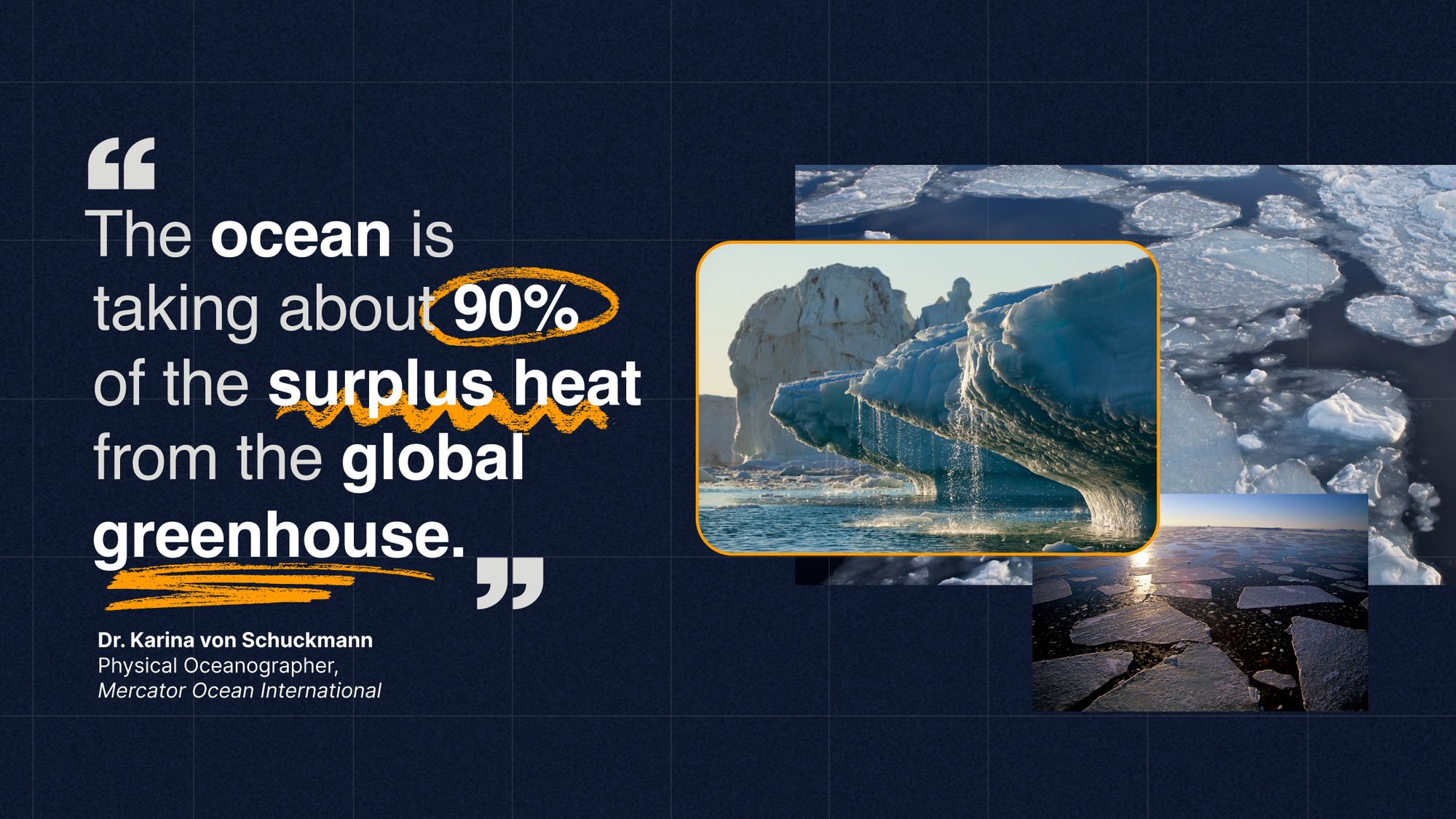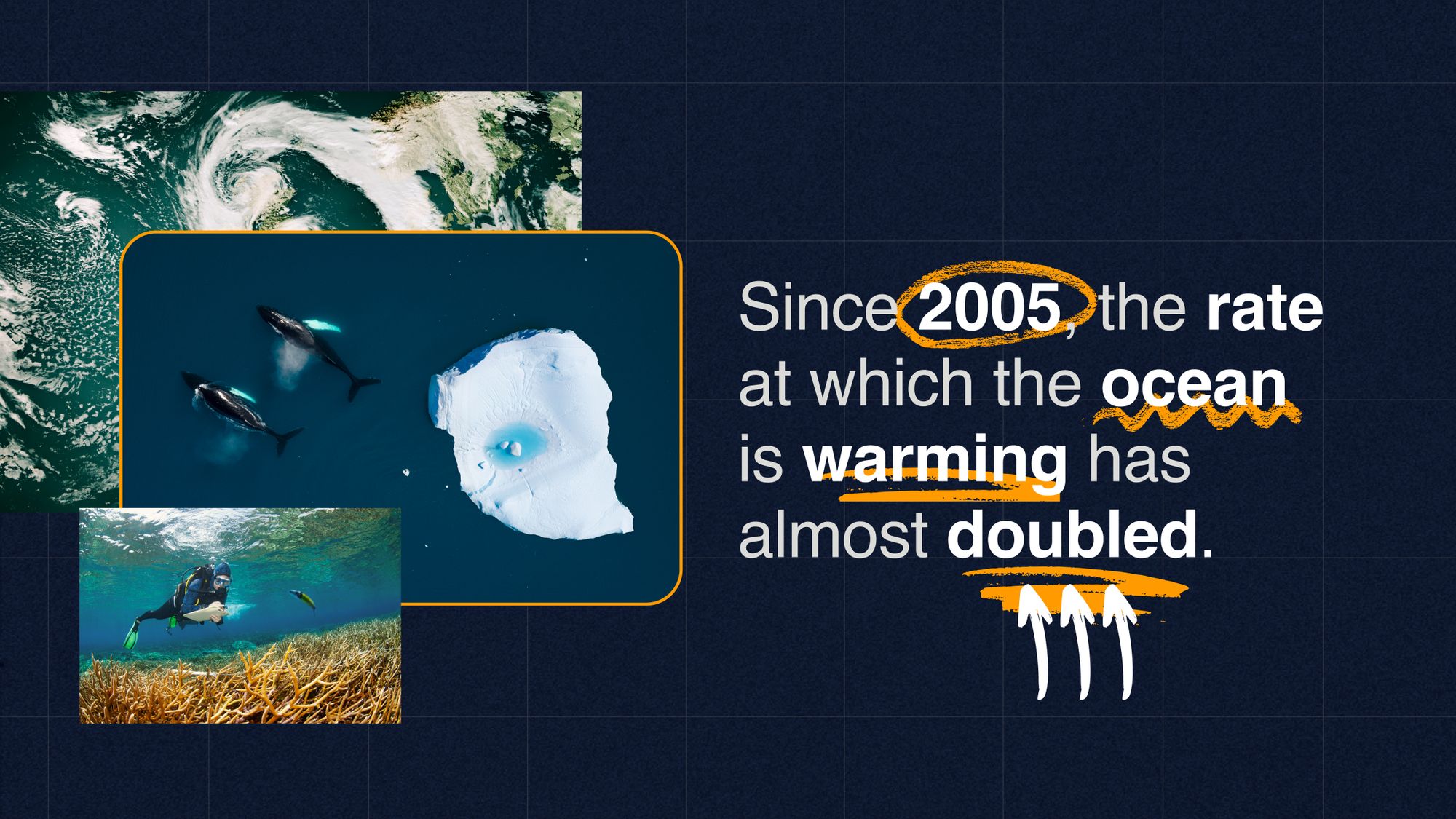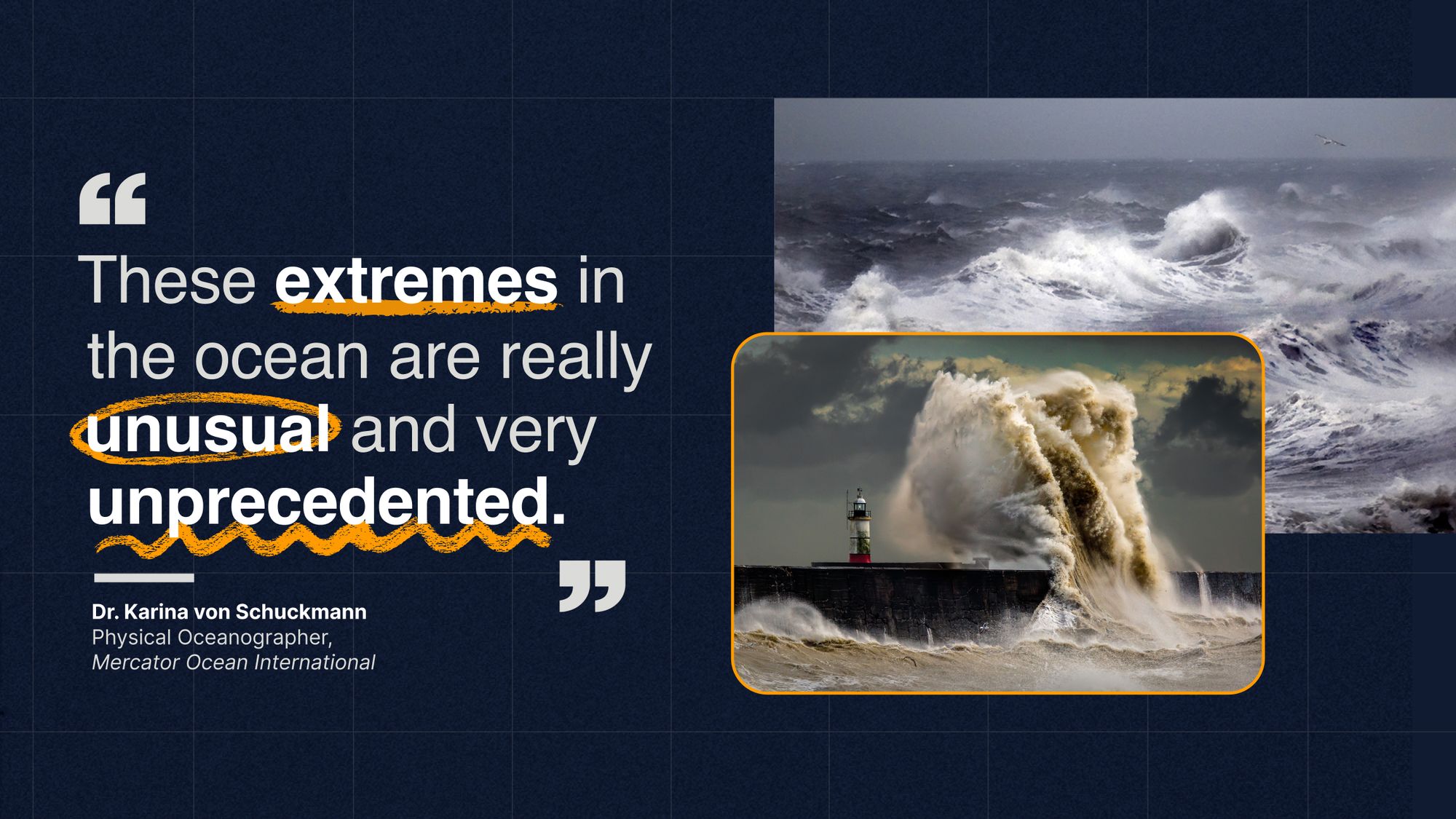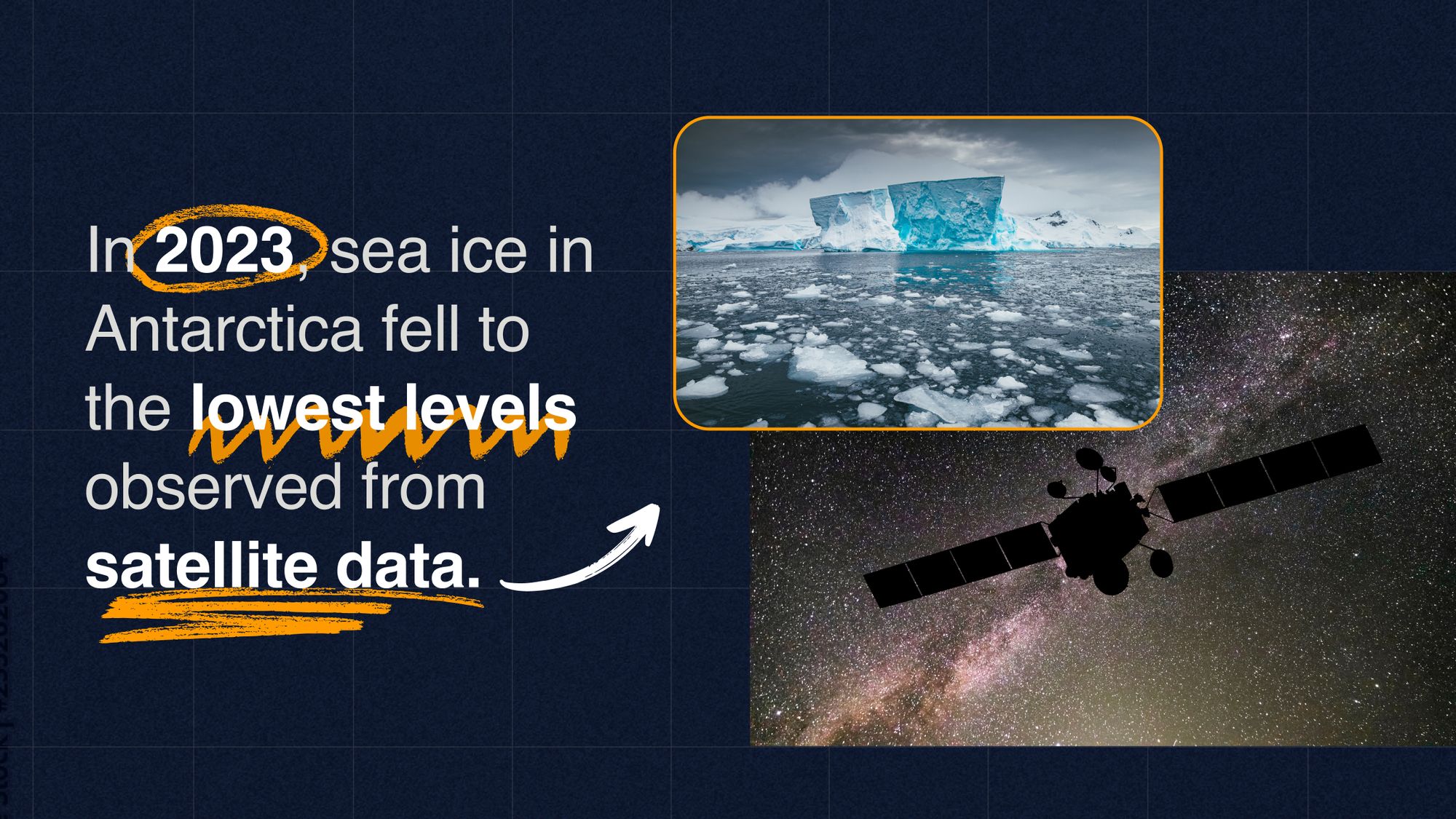Mercator Ocean
Yet, it's constantly changing. We are living through a historic moment of unprecedented climate change, and the world's ocean is undergoing a sea of change, according to new data published in the eighth EU Copernicus Ocean State Report, a global reference report, funded by the European Commission and produced by Mercator Ocean International for the Copernicus Marine Service."
"Every year we break another record, it is more and more concerning. The ocean is our sentinel for global warming"
-Karina von Schuckmann, Mercator Ocean International (MOi) and Chair of the Ocean State Report activity
The team's new data suggests the effects of greenhouse gas emissions have rippled throughout it. But the insights on how the ocean is changing can help inform future innovation, from the waves wetting our shores to those deep in the high seas. These changes have the potential to affect weather patterns, sea ice melting, marine organisms and human health and livelihoods.

Over the past year and a half, over 120 scientists from research institutions across Europe and beyond have been poring over information about big and small changes in the ocean. They have been analysing measurements from satellites above; taking measurements of shifts in temperature, currents, sea ice, sea level, oxygen, and the tiny algae and plankton photosynthesising on the ocean surface; and running advanced computer simulations to recreate 4D ocean models through space and time.
"We've been working together with all those experts in all dimensions of the ocean, the physics, biogeochemistry and biology, and sea ice experts," says von Schuckmann, whose team's results were published in the peer-reviewed journal State of the Planet.
In hot water
For one, water temperatures are increasing across the board. Since 2005, the rate at which the ocean is warming has almost doubled. Three-quarters of the ocean in the northern hemisphere is warming faster than the average of the rest of the ocean on the planet.
"The ocean is taking about 90% of the surplus heat from the global greenhouse effect"
-Karina von Schuckmann
There are also more marine heatwaves – periods longer than five days in which water is anomalously warm. While in 1982 only half of the world's waters experienced a marine heatwave throughout the year, in 2023, 80% of the world's waters did. These anomalous periods of heat used to last about 20 days on average in the late 2000s, now they last an average of twice that long.

More marine heatwaves
This is especially true in the North East Atlantic Ocean and nearby seas, which are experiencing marine heatwaves that are longer, more frequent, and more intense.
In August 2022, the waters off the coast of the Balearic Islands measured a whopping 29.2ºC — the hottest it has been in that region for the past 40 years. In the Mallorca Channel, ocean temperatures rose to over 32ºC during the same summer. The once frigid Gulf of Bothnia got 9.6°C warmer than its average temperature. In 2022 the waters surrounding the Iberian-Biscay-Ireland region often reached 6°C higher temperatures than normal, and they experienced marine heatwaves lasting 145 days on average.
And these temperature increases have been reaching deep into the ocean too, with shocks of warmth stretching to 1,500 meters below the surface in the Mediterranean Sea in 2022. In the last 30 years, the bottom of the north-eastern Barents Sea, which used to be one of the coldest waters of Europe, seems to have entered a state of permanent marine heatwave.

Holding up an icy mirror
Since 1979, the Arctic region has lost an average of 4% of its sea surface ice every ten years, losing a chunk of almost 2.2 million sq km in size. If there was a country the size of the surface ice that's been lost in the past 40 years, it would be the 11th largest in the world.
Von Schuckmann also explains about the climate "feedback" that will be created by melting ice . Since sea ice is white, it reflects sunlight and heat back out into space. As it melts and changes colour, going from white to dark blue, and together with its huge heat capacity, it starts absorbing more heat, warming the ocean even more.
"Extremes are becoming routine, we are observing an Arctic Ocean that is already undergoing a very rapid transition"
-Dr. Gilles Garric, oceaongrapher, Mercator Ocean International
Similarly, in 2023, sea ice in Antarctica fell to the lowest levels observed from satellite data — it got as small as 16.8 million sq km, meaning it lost an area of surface ice three times the size of France.

Sea levels have been rising continuously since at least 1993 according to the first sea level satellite measurements, due to warmer temperatures and melting ice. All of this rapid change causes extreme weather events to be more extreme.
Waves around the globe, for instance, are getting taller and taller, and the tallest 5% of waves have reached peaks they'd never reached before. In April 2022, the port city of Melilla, a Spanish exclave on the north African coast, was overwhelmed by waves crashing straight into the harbour at a height of almost one and a half meters tall. Extremes like this threaten the people who live and work on the shores of our world, and who rely on the ocean for their livelihood, says von Schuckmann.
Understanding the data
"The heat is in the pipeline," says von Schuckmann. Having this detailed, accurate data can help us to start making moves about our future. "We know those numbers, we know how the ocean is changing, and we know we are committed to some of this change such as deep ocean warming for hundreds to thousands of years," says von Schuckmann. "That means we have a chance to adapt life in a more sustainable way."
By accepting you will be accessing a service provided by a third-party external to https://thediveprofessional.org/

